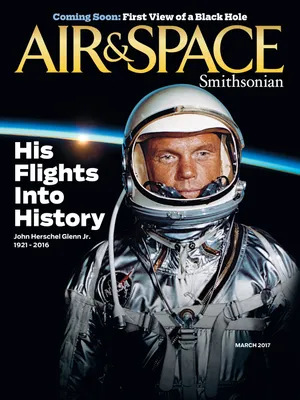The Pipeline That Measured the Speed of Light
In 1931, a corrugated steel tunnel figured in one of history’s greatest science experiments.
/https://tf-cmsv2-smithsonianmag-media.s3.amazonaws.com/filer/13/66/1366dcd8-3dcd-4f27-b9f3-658c40294be5/michelson_pipeline.jpg)
The speed of light (the “c” in Einstein’s E = mc2 ) is 186,282 miles per second. Knowing its precise value is critical to understanding almost everything in the universe, from measuring the distance between stars to precisely locating where you are, such as with GPS. Galileo was the first to attempt to calculate the speed, by shining lanterns across hilltops in 1638. Various quirky methods followed. So what would you use to measure this universal standard?
Albert A. Michelson had a new idea. Born in 1852 and raised in gold-rush Virginia City, Nevada, he was eventually appointed to the U.S. Naval Academy and assigned to lecture on physics.
In 1926, about 20 years after becoming the first American scientist to win a Nobel Prize, Michelson first tried picking up where Galileo left off. He timed arc lamp flashes between Mt. Wilson Observatory in California and a mountain 22 miles away. But realizing that the air in between might have introduced errors, Michelson decided he needed an air-free environment.
In 1931, he decided to construct a mile-long segment of corrugated steel pipe, all but evacuated of air, to measure the speed of a light beam. After local municipalities refused to lend him an existing pipeline, Michelson commenced building his own. Sealing the 60-foot pipe sections proved especially daunting. The final recipe for the home-brew sealant included rope, canvas, glue, friction tape, and tire inner tubes. Propped on wood trestles between flimsy steel shacks, the pipe looked like a sloppy public works project. But inside, pumps could drop the pressure to half an inch of mercury (equivalent to the atmosphere at about 110,000 feet). This otherwise-unassuming pipeline effectively simulated deep space, smack in the middle of California farm country.
On each run, a “sun bright” beam from an arc lamp bouncing off a 16-sided whirling mirror completed five round trips. To clock elapsed time, Michelson adjusted the mirror’s rotation until the returning beam met the next mirrored face exactly.
A fascinated public devoured regular news reports on the experiment, then flocked to see it in such numbers that Michelson implored them to stop. Albert Einstein visited in March 1931. As work progressed, even tides and tectonic shifts became concerns. Michelson worked at night to avoid any heat expansion in the pipe’s rarefied atmosphere.
“I plan to retire,” Michelson vowed, as doctors warned the now-79-year-old that his “beautiful obsession,” as he called it, might risk his health. By April, he was directing the work from a sickbed. Elated after completing around half the trials, Michelson was beginning to draft his report when he died. The results, published posthumously in Astrophysical Journal, gave a figure of around 186,271 miles per second, just slightly lower than we accept today.
The Irvine experiment was damaged in a 1933 earthquake, and the pipe was later bought and reused by the city. Pieces of this unique aerospace artifact may be draining farmlands or marshes in Southern California right now. Today, CERN’s Large Hadron Collider, among other experiments, continues the quest to understand the universe by sending beams of light through a long tunnel.
